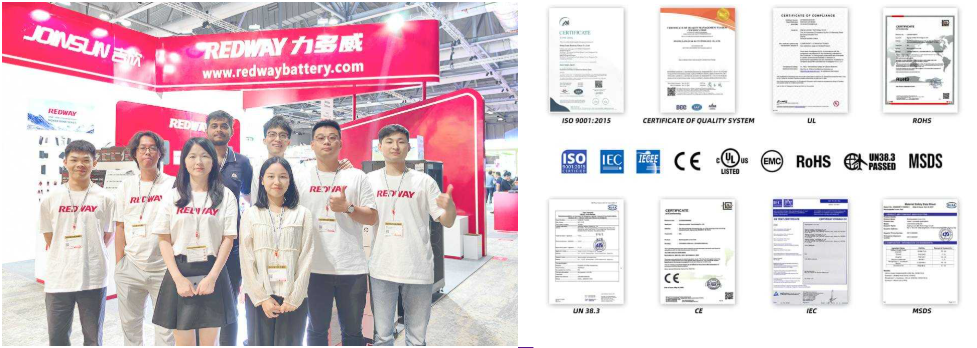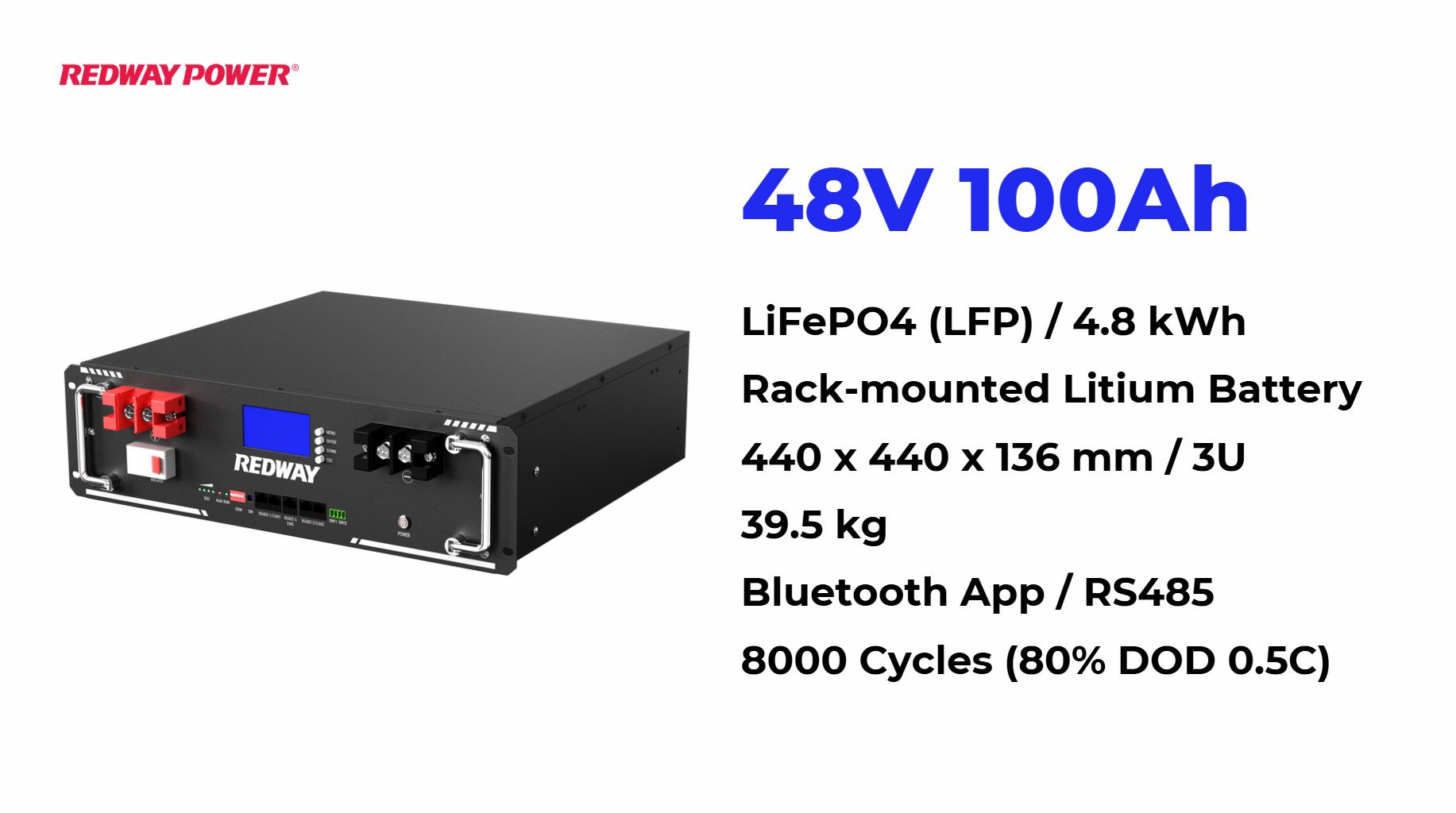The full charge voltage of a 48V battery typically ranges from 54.6 to 58.4 volts, depending on the battery chemistry and configuration. For LiFePO4 batteries, commonly used in applications like those from Redway Battery, the full charge voltage is usually about 54.4 volts (3.4V per cell × 16 cells). Accurate knowledge of full charge voltage ensures proper charging and battery longevity.
What Is the Standard Full Charge Voltage for a 48V Battery?
A 48V battery’s full charge voltage is defined by the sum of its individual cells’ fully charged voltage. For lithium iron phosphate (LiFePO4) batteries, each cell reaches about 3.4V fully charged. With 16 cells in series, the total is approximately 54.4V.
For lead-acid batteries, the full charge voltage can be higher, closer to 58.4V (2.4V per cell × 24 cells). Knowing this voltage helps prevent overcharging and damage. Redway Battery specializes in LiFePO4 batteries with optimized charge profiles.
Wholesale lithium golf cart batteries with 10-year life? Check here.
How Does Battery Chemistry Affect the Full Charge Voltage of 48V Batteries?
Different battery chemistries have varying nominal and full charge voltages per cell. Lead-acid cells typically have nominal voltage of 2V and charge up to 2.4V per cell, while LiFePO4 cells have a nominal 3.2V and charge up to 3.4V per cell.
This means a 48V lead-acid battery often charges to ~58.4V, whereas a LiFePO4 48V battery fully charges around 54.4V. Redway Battery leverages lithium chemistry for safer, more stable charging and longer cycle life.
Want OEM lithium forklift batteries at wholesale prices? Check here.
| Battery Chemistry | Nominal Voltage per Cell (V) | Full Charge Voltage per Cell (V) | Total Full Charge Voltage for 48V Battery |
|---|---|---|---|
| Lead-acid | 2.0 | 2.4 | 58.4 V (24 cells) |
| LiFePO4 | 3.2 | 3.4 | 54.4 V (16 cells) |
Why Is It Important to Know the Full Charge Voltage of a 48V Battery?
Knowing the correct full charge voltage is crucial for safe battery charging, maximizing capacity, and prolonging battery health. Overcharging beyond recommended voltage leads to overheating, speeding up degradation, and risk of failure.
Proper charge controllers with accurate setpoints ensure batteries, including those supplied by Redway Battery, maintain optimal charge levels for enhanced cycle life and performance.
How Is the Full Charge Voltage Determined in Battery Packs?
Full charge voltage is the sum of the maximum voltages of each series cell under ideal charging conditions. Battery management systems (BMS) monitor individual cell voltages to prevent overcharging.
Advanced battery systems from Redway Battery feature BMS enabling accurate voltage monitoring and balancing during charge and discharge for safety and performance.
When Should You Check or Adjust the Full Charge Voltage Setting?
Full charge voltage settings should be checked initially during system setup, after battery replacements, or when changing battery management or charging equipment.
Adjustments may be necessary if you switch battery chemistry or pack configuration. Redway Battery recommends users consult technical support to align voltage parameters with their specific battery models.
How Do Temperature and Usage Conditions Affect the Full Charge Voltage?
Temperature can affect chemical reactions inside cells, altering the effective voltage. Some chargers adapt charging voltage based on temperature to avoid overcharge or undercharge risks.
Under heavy load or rapid charging, voltage spikes can occur, so protective measures by BMS and charge controllers, as found in Redway Battery’s products, help maintain voltage within safe limits.
What Are the Consequences of Incorrect Full Charge Voltage?
If the full charge voltage is set too high, the battery can overheat, suffer capacity loss, and reduce lifespan. If set too low, the battery will not fully charge, lowering usable capacity and efficiency.
Properly calibrated chargers and BMS systems from Redway Battery ensure voltage remains within safe thresholds tailored to 48V battery chemistry and application.
Can Different 48V Battery Applications Have Different Full Charge Voltages?
Yes, industrial forklifts, electric golf carts, renewable energy storage, and telecom applications may use different battery chemistries and configurations, resulting in slight voltage variations.
Redway Battery’s OEM customizations cater to these differences by providing charge and voltage specifications aligned with the intended use case, ensuring maximum system compatibility.
| Application | Typical Battery Type | Full Charge Voltage (V) |
|---|---|---|
| Forklifts | LiFePO4 (16 cells) | ~54.4 V |
| Electric Golf Carts | LiFePO4 | ~54.4 V |
| Telecom/Energy Storage | Lead-acid or Li-ion | 54.4 – 58.4 V |
How Do Redway Battery’s LiFePO4 Packs Handle Full Charge Voltage Management?
Redway Battery integrates advanced BMS and optimized charging algorithms to maintain each cell within ideal voltage ranges, typically 3.4V per cell at full charge.
This prevents overcharge, ensures uniform cell balancing, and extends cycle life. Their approach suits diverse battery pack sizes, including 48V configurations for golf carts and forklifts.
Redway Expert Views
“At Redway Battery, precise management of full charge voltage is fundamental to battery safety and longevity. Our LiFePO4 battery packs, designed for 48V systems, incorporate sophisticated BMS to keep cell voltages balanced around 3.4V per cell during charging. This protects cells from damage, optimizes capacity, and supports heavy-duty cycles demanded by forklifts, golf carts, and industrial applications.” — Redway Battery Technical Manager
What Is the Best Practice to Measure and Maintain Full Charge Voltage?
Use high-accuracy voltmeters or smart battery analyzers under no-load conditions post-charge to measure full voltage. Combine this with BMS data for real-time monitoring.
Ensure charger settings align with battery chemistry and manufacturer specs, such as Redway Battery’s recommendations, to maintain ideal full charge voltage.
How Can You Adjust Charger Settings to Match the Full Charge Voltage?
Charging systems often allow voltage setpoint adjustments with parameters for float, bulk, and absorption stages. For a 48V LiFePO4 battery, set bulk charge to around 54.4V.
Users should consult Redway Battery technical documentation or support to precisely tune their charger for safe and efficient charging.
Conclusion
The full charge voltage of a 48V battery varies mainly by battery chemistry—LiFePO4 batteries typically charge to about 54.4V, while lead-acid batteries charge higher, near 58.4V. Accurate voltage knowledge and precise charging control, as practiced by Redway Battery with advanced BMS and tailored packs, are essential for safety, optimal performance, and long battery life. Proper management of this voltage prevents degradation, maximizes capacity, and ensures reliable operation across applications.
FAQs
Q1: Is 54.4V the exact full charge voltage for all 48V LiFePO4 batteries?
While 54.4V (3.4V × 16 cells) is standard, slight variations can occur due to design and cell tolerances.
Q2: Can I use a charger designed for 58V lead-acid batteries on my 48V LiFePO4 pack?
No, overvoltage charging can damage LiFePO4 cells. Use chargers with compatible voltage profiles.
Q3: How often should I check full charge voltage on my 48V battery?
Regular checks after charging cycles or maintenance help ensure consistent battery health.
Q4: Does temperature affect how I should set full charge voltage?
Yes, some chargers adjust voltage based on temperature to avoid damage under extreme conditions.
Q5: How does Redway Battery support customers in managing battery voltage?
Redway Battery provides OEM customization, BMS integration, and technical support to optimize charge voltage settings per battery application.






